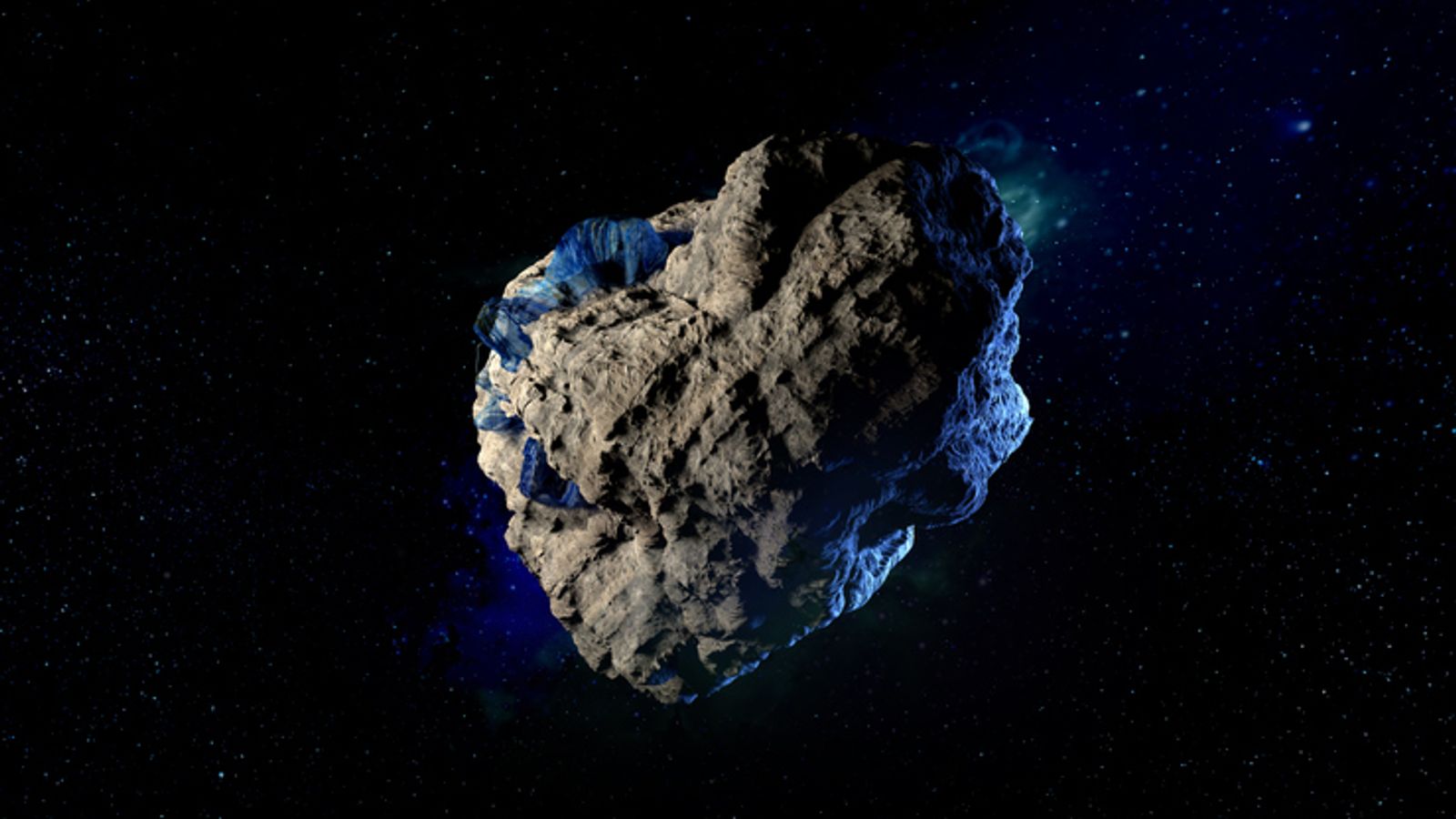2022 AP7: ‘Planet killer’ asteroid found hiding in sun’s glare
NASA last month smashed a spacecraft into a much smaller asteroid seven million miles away and managed to shift its orbit.
Tuesday 1 November 2022 11:44, UK
File pic
Image:
File pic of an asteroid
Why you can trust Sky News
The biggest Potentially Hazardous Asteroid (PHA) in eight years has been discovered hiding in the sun’s glare.
It’s estimated at 1.5km wide – nearly a mile – a size that astronomers class as “planet killers” due to the damage they can cause.
The rock is believed to be in the top 5% of largest-known PHAs.
Called 2022 AP7, it’s one of several newly discovered asteroids found orbiting near Earth and Venus.
The asteroid crosses the Earth’s own orbit, but there’s no need to panic for now: experts say any possible collision probably wouldn’t happen for a few thousand years.
The asteroids were detected using the Cerro Tololo observatory in Chile and detailed in a study in the Astronomical Journal.
“So far we have found two large near-Earth asteroids that are about 1km across, a size that we call planet killers,” said Scott S Sheppard from the Earth and Planets Laboratory of the Carnegie Institution for Science.
MORE ON SPACE
FILE PHOTO: The planet Mars is shown May 12, 2016 in this NASA Hubble Space Telescope view taken May 12, 2016. NASA/Handout via Reuters ATTENTION EDITORS – THIS IMAGE WAS PROVIDED BY A THIRD PARTY. EDITORIAL USE ONLY/File Photo
Evidence of ancient ocean on Mars raises the ‘potential for life’, say researchers
This image shows a spectacular view of the orange and pink clouds that make up what remains after the explosive death of a massive star — the Vela supernova remnant
New image reveals stunning ghostly remains of gigantic star
The moon moves in front of the sun during a partial solar eclipse over Hamburg's Stadtpark. The partial eclipse can be seen in parts of Europe, Africa and Asia. Photo by: Axel Heimken/picture-alliance/dpa/AP Images
In pictures: Partial solar eclipse as it happened
Related Topics:
Space
The other large asteroid has an orbit completely within the Earth’s own orbit, so won’t ever trouble us.
Finding asteroids in the inner Solar System is tricky because of the bright background from the sun’s glare. There are also only two 10-minute windows each night to conduct observations.
Big Ideas Live 2022
Image:
Big Ideas Live 2022
“Only about 25 asteroids with orbits completely within Earth’s orbit have been discovered to date because of the difficulty of observing near the glare of the sun,” said Mr Sheppard, lead author of the study.
The astronomer added: “There are likely only a few NEAs (near Earth asteroids) with similar sizes left to find, and these large undiscovered asteroids likely have orbits that keep them interior to the orbits of Earth and Venus most of the time.”
In September, NASA smashed a spacecraft into a much smaller asteroid (160 metres-wide) seven million miles away and managed to shift its orbit.
The experiment was intended to test whether action could be effective should the Earth ever be threatened by an incoming object.
The asteroid that fell to Earth as a meteorite and wiped out the dinosaurs by igniting wildfires thousands of miles from its impact zone is thought to have been at least six miles wide (10km), but may have been as much as nine miles (15km) across.






























